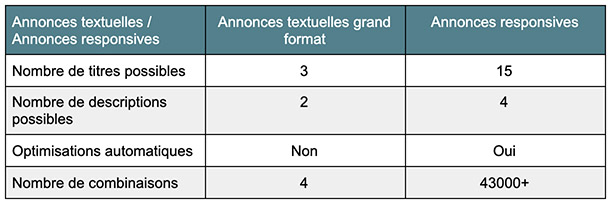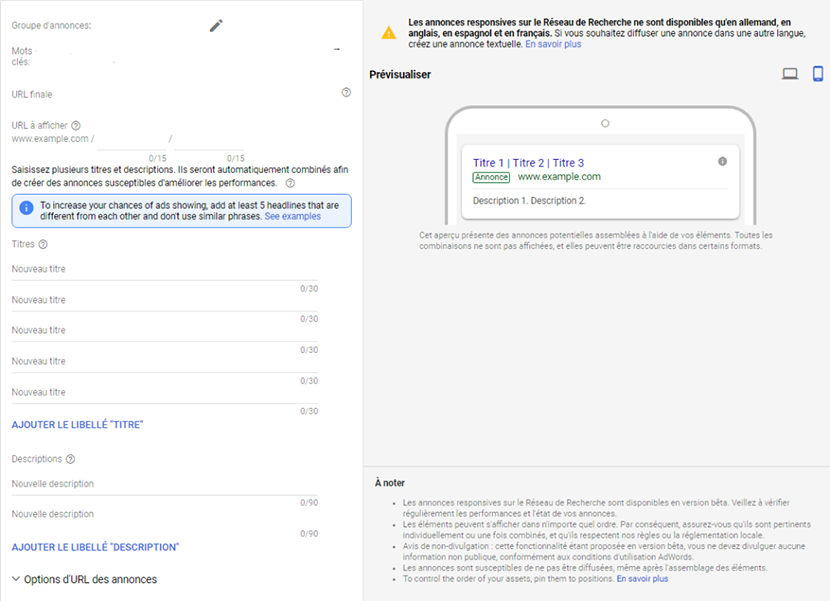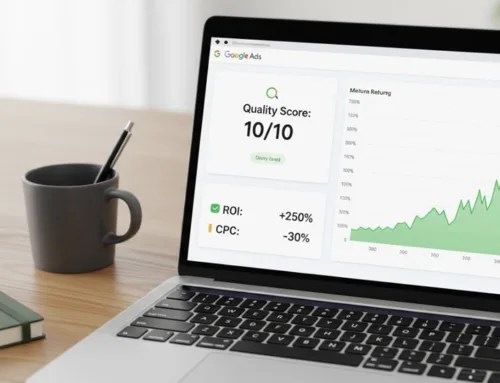Google continues to rely on automation and the use of its algorithm to maximize results for advertisers, as it does for smart shopping campaigns. As a result, from July 2022, advertisers on Google Ads will no longer be able to create or modify large-format text ads.
“Your existing extended text ads will continue to run alongside the dynamic responsive search ads, and you’ll still be able to view reports on their performance. What’s more, you’ll be able to pause and resume your large-format text ads, or remove them if necessary,” said Google engineer Bent Lane.
Why modify existing text ads?
Last February, the American firm had already evolved its strategy by offering responsive ads by default on its advertising platform. Relying on the power of its algorithm and machine learning, Google offers advertisers the option of including a large number of titles and descriptions in responsive ads, letting the algorithm find the best possible match by maximizing the delivery of the best-performing combinations.
To justify this major change in search campaign management, Google claims that the use of responsive ads on the search network could increase clicks and conversions by up to 10%.
How can we prepare for the end of large-format text ads?
To avoid missing out on this transition, Google is recommending the implementation of a responsive ad in every ad group by June 30, 2022. To ease the transition, Google has provided a few recommendations to help you prepare:
- Use the “ad effectiveness” indicator to evaluate the ad’s potential.
- Pin titles or descriptions to specific positions in the responsive ad, if you want to communicate essential information.
- Rely on the performance history of your existing ads.
Best practices on responsive ads
The experts at our Google ads e-commerce agency offer you their best practices. To begin with, let’s look at the differences between responsive ads and large-format text ads.

Best practices for a responsive ad

Responsive ad titles
- Please provide at least 10 different titles
- Be sure to use your keywords in titles (see add automatic title generation {}).
- Diversify your calls to action.
- Try out different headline lengths. You don’t always have to maximize the number of characters.
- Highlight additional benefits, delivery information, a problem you’ve solved, etc.
- Tip: if a title is to appear in all ads, pin it in position 1 or 2 and don’t pin anything else in the same position.
Responsive ad descriptions
- Make sure there are at least two descriptions. Four descriptions is best.
- Use all the available space in the ads, i.e. 90 characters, even if it means writing 2 contents in a single field.
- Make sure each description is unique and makes sense in any order.
- Tip: just like titles, you can place a description in a fixed position. If there’s a description that needs to appear in every ad, such as a disclaimer, place it in position 1 and don’t place anything else there.
Mis à jour le 19 April 2025
Mis à jour le 19 April 2025




